The Peruvian Apple Cactus, also known as Cereus repandus, is a stunning cactus with a unique appearance. It features tall, columnar stems that can grow to be over 30 feet in its natural habitat. The stems have a beautiful greenish-blue hue, which adds to the plant’s visual appeal. However, it’s important to note that the Peruvian Apple Cactus has sharp spines, so handling it with caution is essential.
Key Takeaways:
- Learn how to properly care for the Peruvian Apple Cactus, also known as Cereus repandus.
- Discover the ideal growing conditions for the Peruvian Apple Cactus, including light requirements and watering frequency.
- Get tips on potting and propagating the Peruvian Apple Cactus to ensure long-term success.
- Identify common pests and diseases that can affect the Peruvian Apple Cactus and learn how to manage them effectively.
Appearance of the Peruvian Apple Cactus
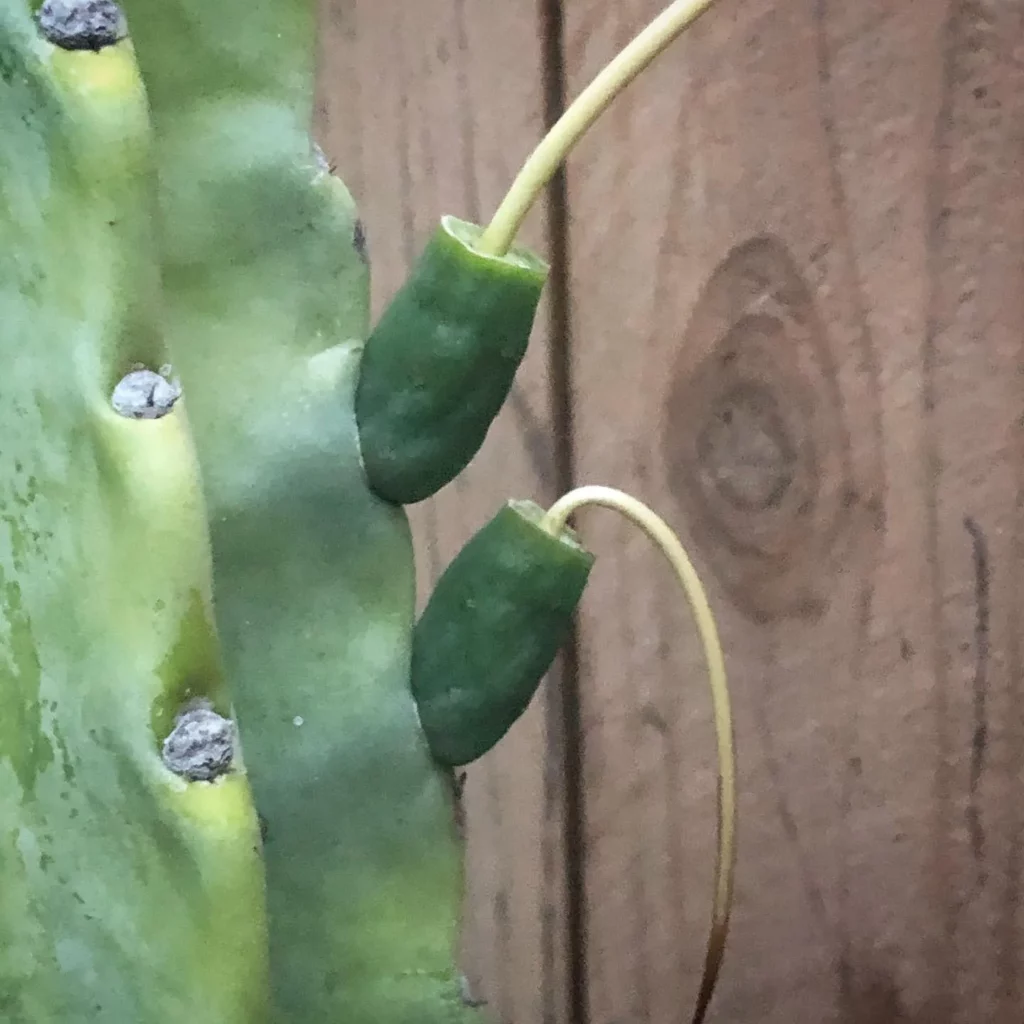
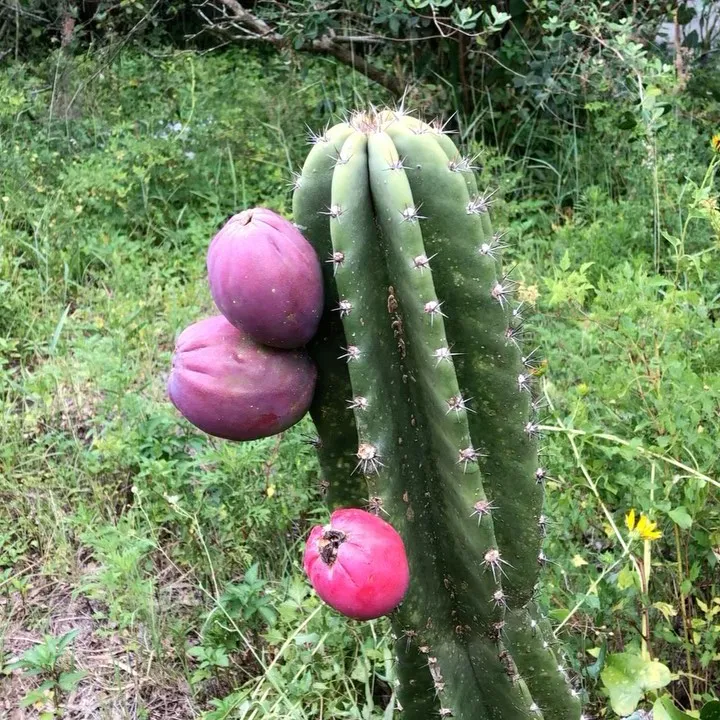
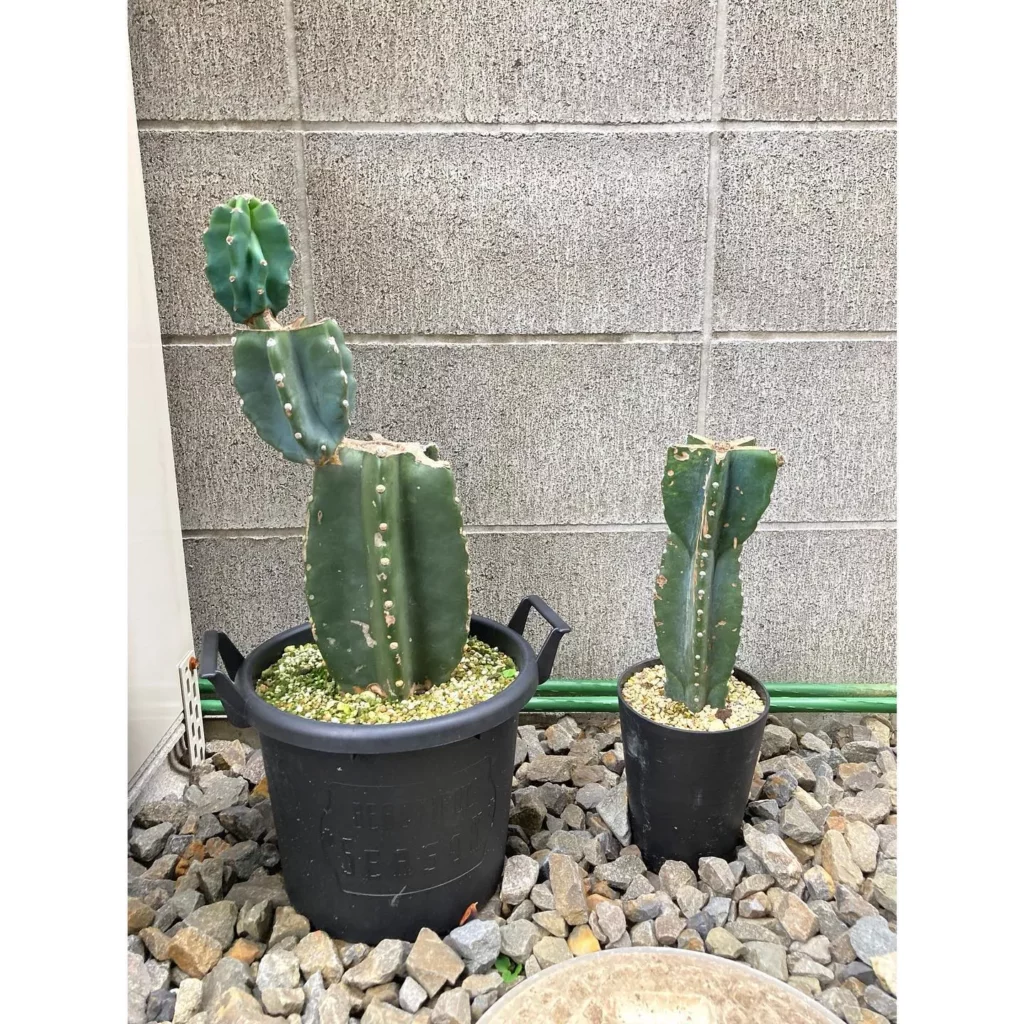
The tall and upright growth of the Peruvian Apple Cactus makes it an eye-catching addition to any garden or indoor space. It can also be grown as a potted houseplant, and with proper support, it can reach impressive heights. The combination of its striking stems and spines creates a visually stunning display that is sure to capture attention.
Gorgeous Greenish-Blue Stems
- The Peruvian Apple Cactus has tall and columnar stems.
- The stems have a beautiful greenish-blue color.
- They can grow to be over 30 feet in their natural habitat.
Caution: Sharp Spines
- The Peruvian Apple Cactus has spines that should be handled with care.
- These spines can cause injury if not handled properly.
- It is advisable to wear gloves or use a protective barrier when handling the plant.
Light Requirements for the Peruvian Apple Cactus
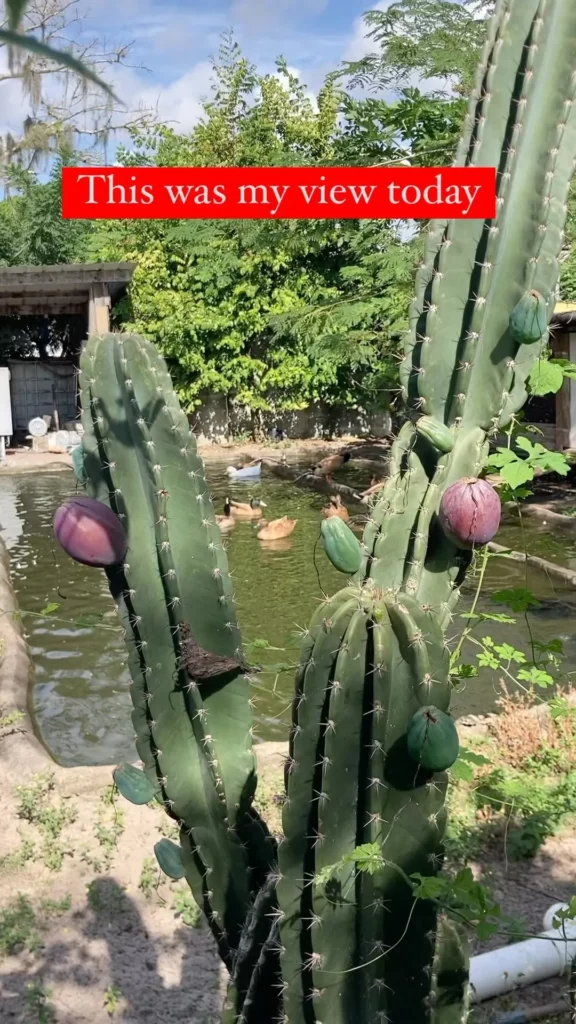
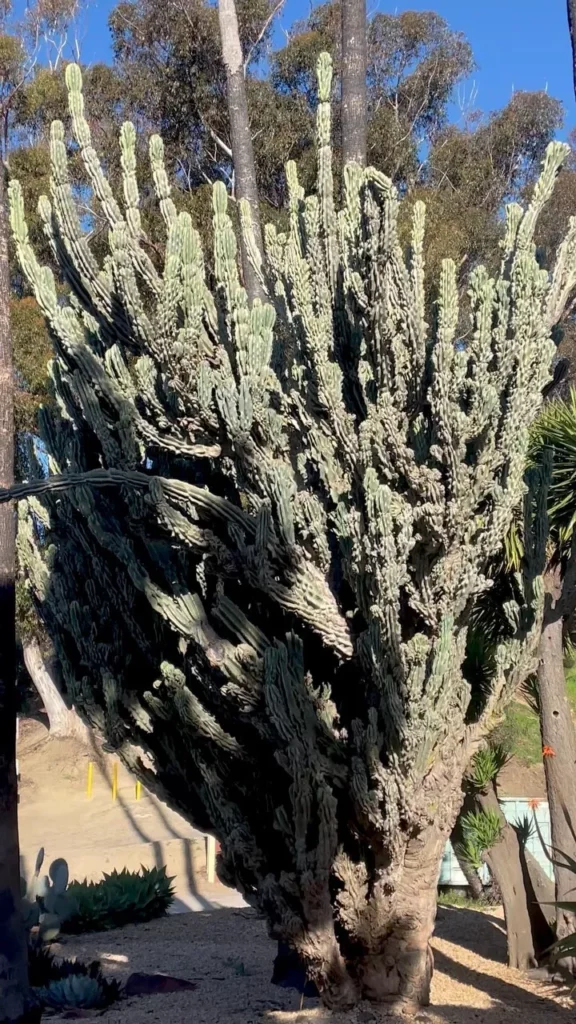
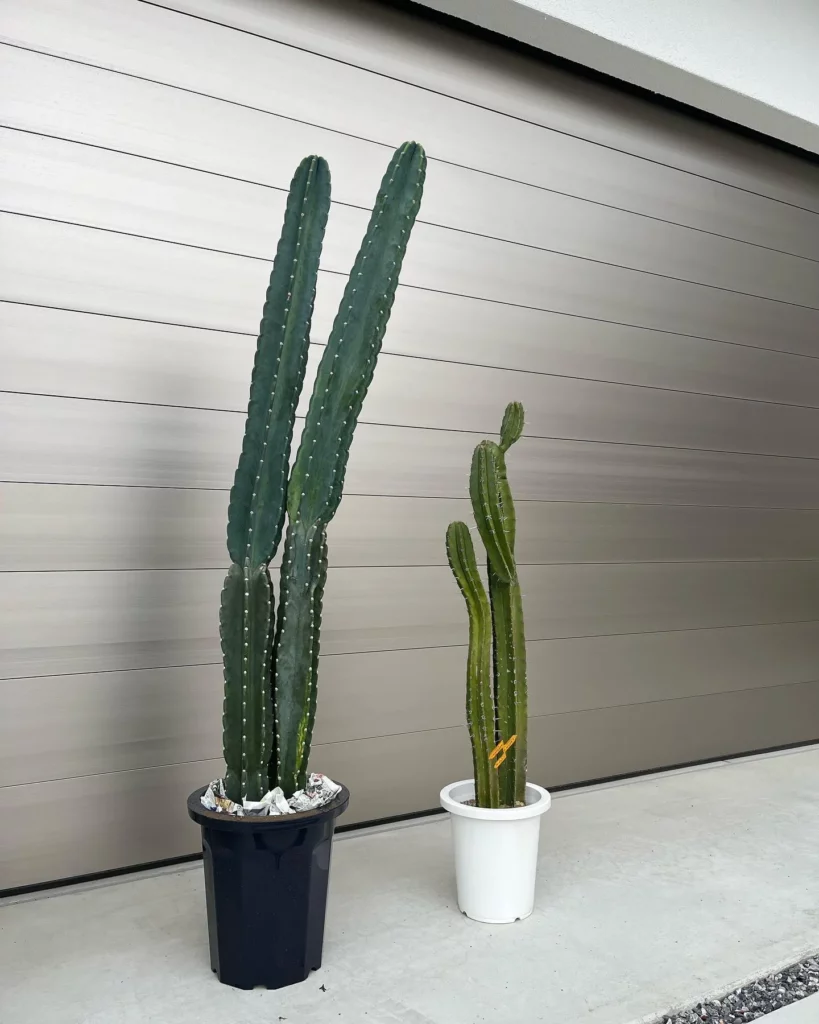
The Peruvian Apple Cactus has specific light requirements that contribute to its healthy growth and overall well-being. Understanding these light needs will help you provide the perfect environment for your Peruvian Apple Cactus to thrive.
Indoor Light Requirements
When growing the Peruvian Apple Cactus indoors, it is crucial to place it in a spot that receives bright, indirect light. Find a location near a window where the cactus can bask in natural light without being exposed to direct sunlight, which can scorch its delicate stems. Rotate the plant periodically to ensure even light distribution and prevent it from leaning towards the sun.
Outdoor Light Requirements
If you have the opportunity to grow your Peruvian Apple Cactus outdoors, it will appreciate full sun exposure. Place it in a sunny spot in your garden or on your patio where it can bask in the sunlight for hours each day. This exposure to ample sunlight will contribute to the cactus’s growth and height potential, allowing it to reach its full glory of up to 30 feet in height.
Watering the Peruvian Apple Cactus
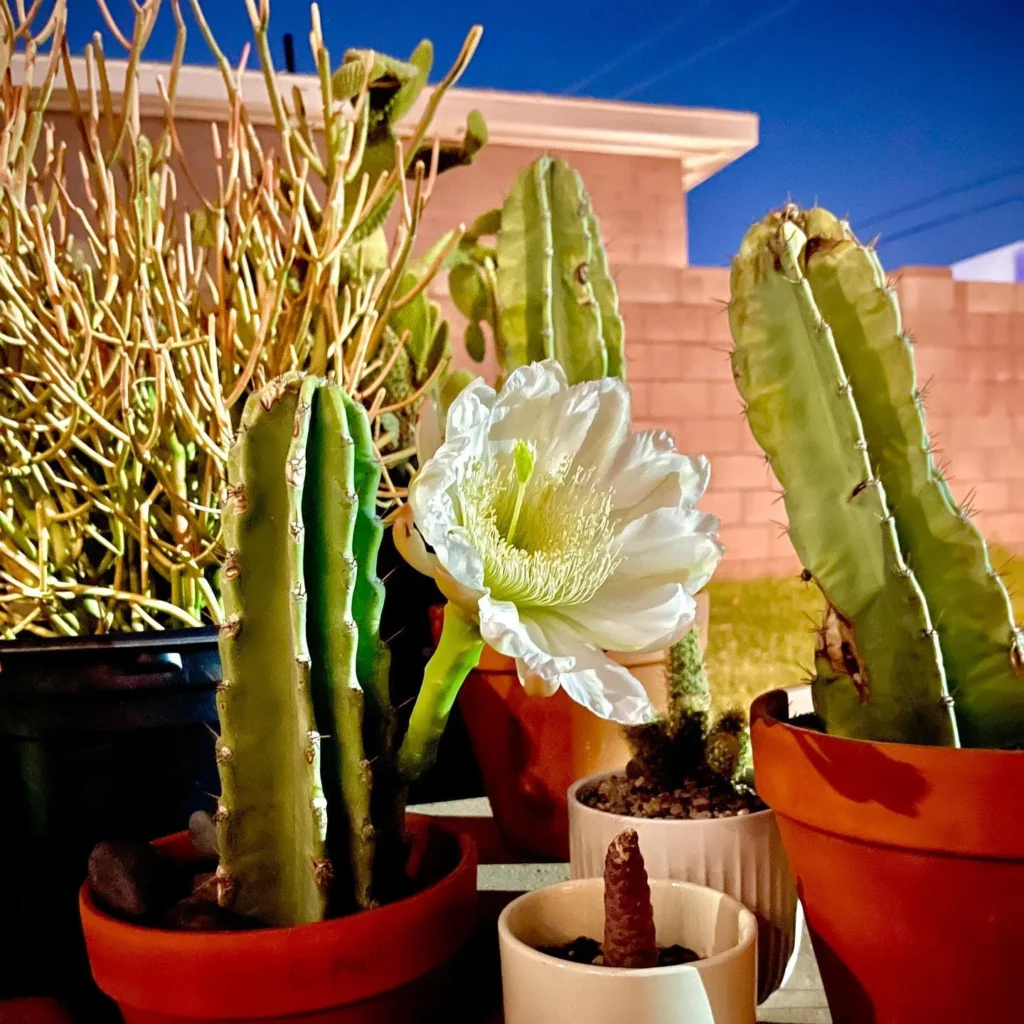
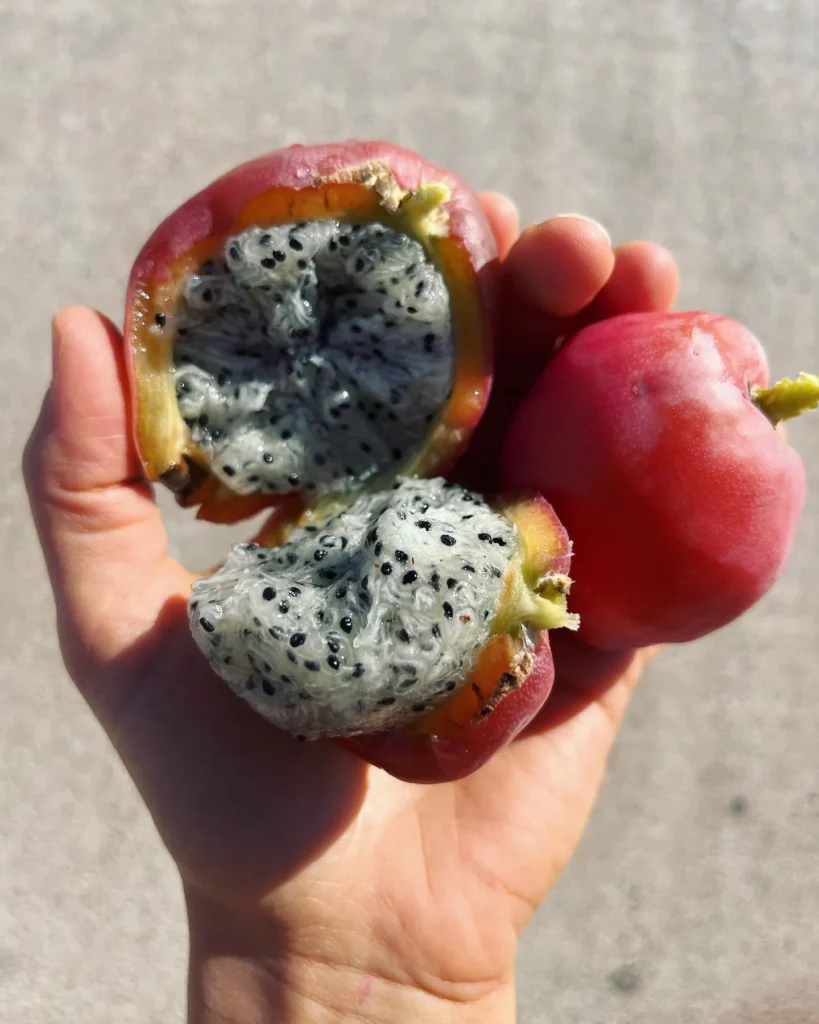
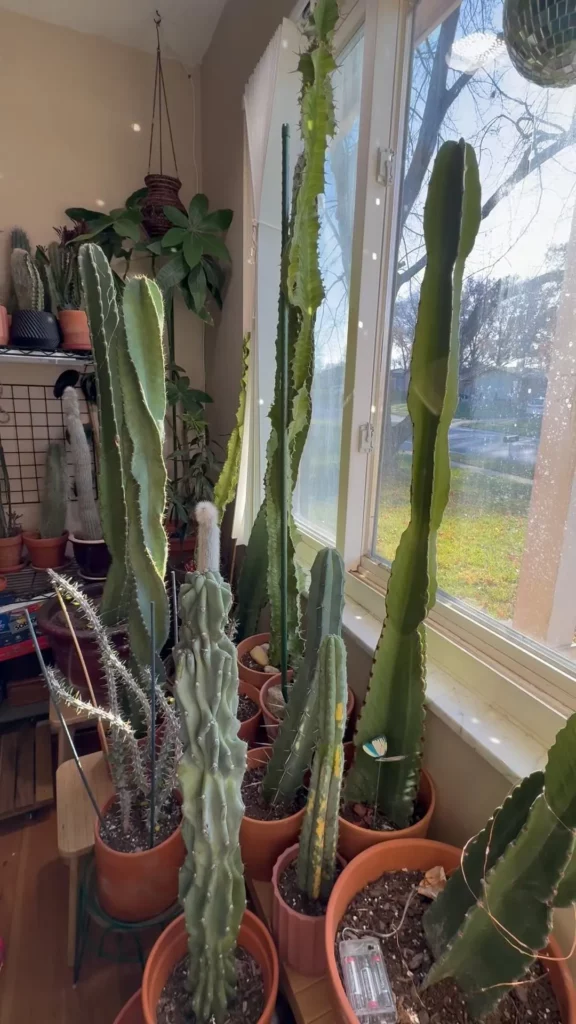
Proper watering is essential for the health and vitality of the Peruvian Apple Cactus. Here are some guidelines to help you water your cactus effectively:
- Watering Frequency: The Peruvian Apple Cactus should be watered thoroughly every 2-3 weeks. This allows the soil to dry out between waterings, preventing overwatering and root rot.
- Draining Soil: To ensure good drainage, use a fast-draining cactus soil mixture. This helps prevent water from sitting around the roots, which can lead to fungal diseases.
- Watering Method: When watering, thoroughly soak the soil until water drains out of the bottom of the pot. This ensures that the entire root ball receives moisture.
- Adjusting for Season: During the growing season, when temperatures are warmer and the cactus is actively growing, you may need to increase the frequency of watering. Monitor the soil moisture levels and adjust accordingly.
Signs of Overwatering and Underwatering
It’s important to pay attention to the signs your Peruvian Apple Cactus is giving you. Here are some indicators of overwatering and underwatering:
- Overwatering: If the cactus appears yellowish or mushy, this may be a sign of overwatering. The roots may also become soft or blackened. Reduce watering and allow the soil to dry out before watering again.
- Underwatering: If the cactus looks shriveled or wrinkled, it may be underwatered. The stems may also appear dry or brittle. Increase the frequency of watering, ensuring the soil is thoroughly moistened each time.
Fertilizing the Peruvian Apple Cactus
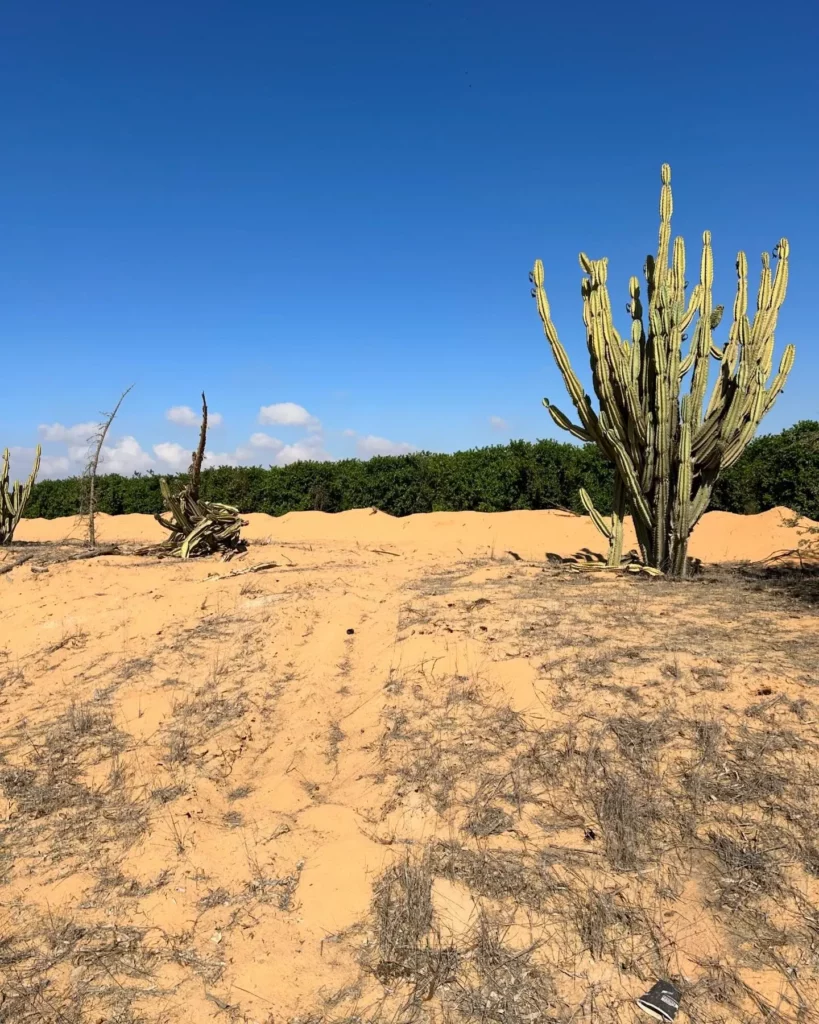
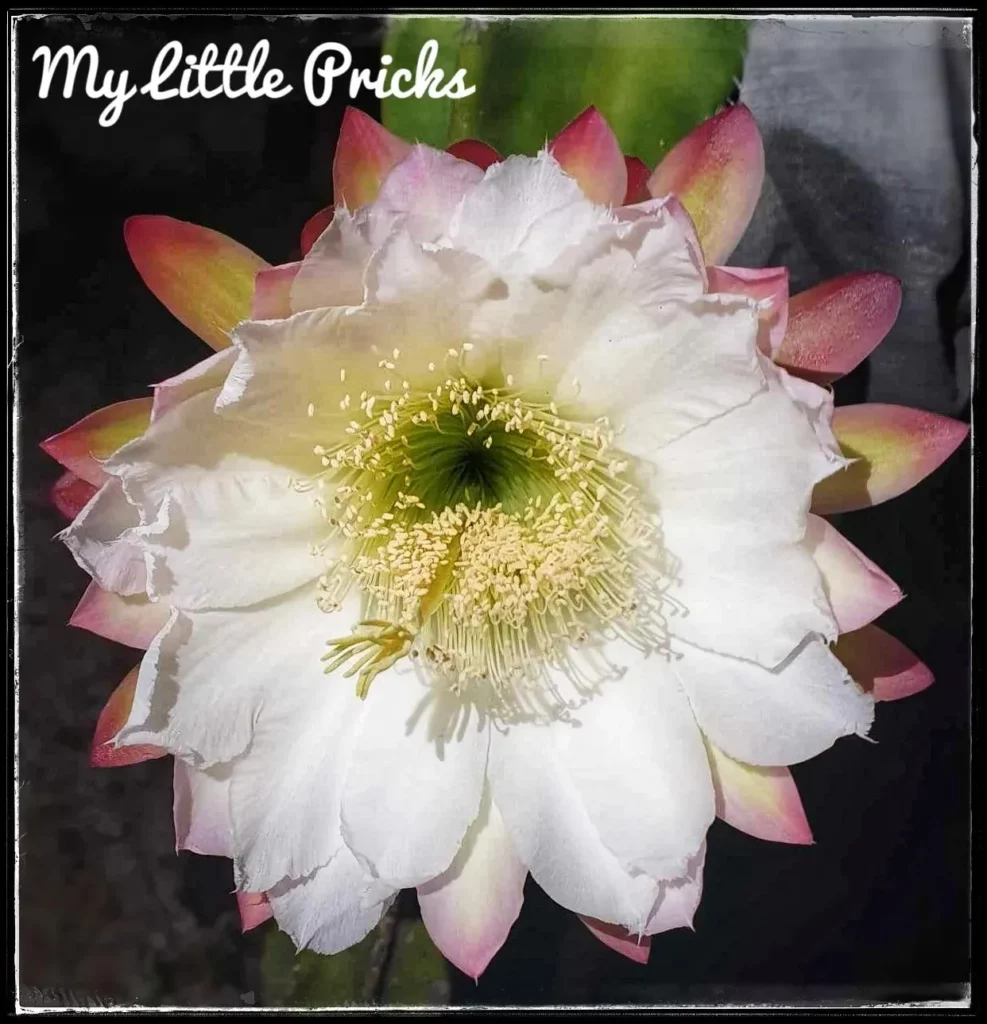
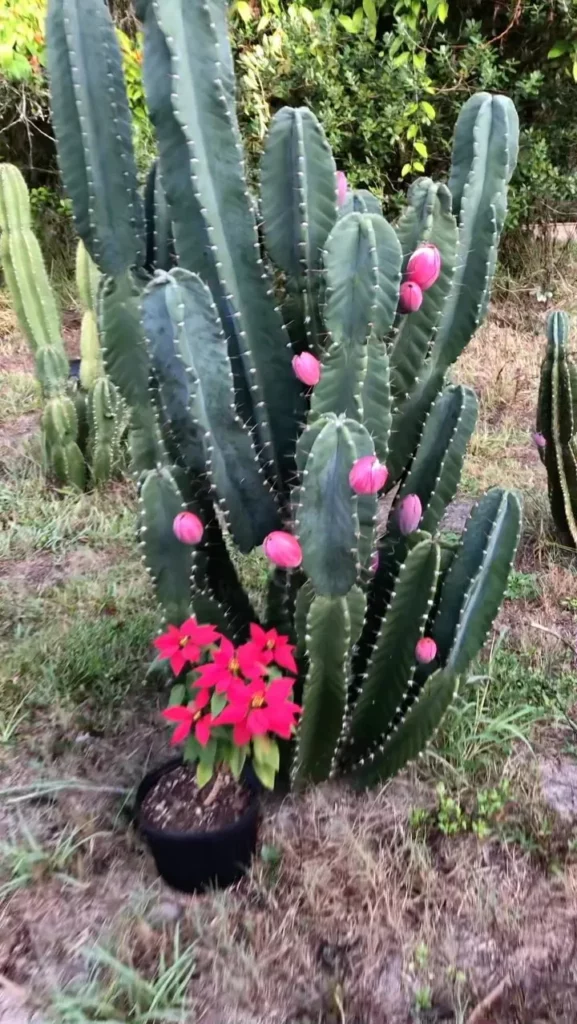
Proper fertilization is an essential element in the care of your Peruvian Apple Cactus. With the right nutrients, your cactus will thrive and grow to its fullest potential. Here are some key points to keep in mind when fertilizing:
- Choose the right fertilizer: Look for a slow-release cactus fertilizer specifically formulated for succulents. This type of fertilizer provides a balanced blend of nutrients that meet the unique needs of your Peruvian Apple Cactus.
- Follow the instructions: Read the instructions on the fertilizer package carefully. Each brand may have different application rates, so it’s important to follow the recommended guidelines for the size and age of your cactus.
- Apply during the growing season: Fertilize your Peruvian Apple Cactus during the active growing season, which typically occurs in spring and summer. This is when the cactus requires the most energy for growth and development.
- Apply to the soil: Spread the fertilizer evenly around the base of the plant, avoiding contact with the stems and spines. Gently work the fertilizer into the top layer of soil using a small garden trowel or your fingers.
Potting the Peruvian Apple Cactus
When it comes to potting the Peruvian Apple Cactus, there are a few key things to keep in mind for successful growth. Choosing the right pot is essential, as the cactus has a top-heavy nature. Opt for a pot with a heavy base to provide stability and prevent tipping over. Additionally, make sure the pot has drainage holes to allow excess water to escape, avoiding waterlogged soil that can lead to root rot.
Another crucial factor in potting the Peruvian Apple Cactus is the soil mixture. It’s important to use a well-draining cactus soil to ensure proper moisture levels and prevent the roots from sitting in standing water. Create a mixture that combines regular potting soil with sand or perlite to enhance drainage. This will help mimic the cactus’s natural habitat and promote healthy root development.
When it comes to repotting, younger cacti may need more frequent repotting to accommodate their rapid growth. As the plant matures and reaches a stable size, annual repotting should be sufficient. However, if you have taller clippings or branches, consider using a larger pot to provide ample room for growth and stability.
Key points for potting the Peruvian Apple Cactus:
- Choose a pot with a heavy base to support the top-heavy nature of the cactus.
- Ensure the pot has drainage holes to prevent waterlogging and root rot.
- Use a well-draining cactus soil mixture with regular potting soil, sand, or perlite.
- Repot younger cacti more frequently until growth stabilizes, then repot annually.
- Consider a larger pot for taller clippings or branches to accommodate their growth.
Propagation of the Peruvian Apple Cactus
If you’re looking to expand your collection of Peruvian Apple Cacti or share this unique plant with others, propagation through stem cuttings is a simple and effective method. Here’s how you can propagate your Peruvian Apple Cactus:
- Take a cutting from the top of a mature plant using a sharp, clean knife or pruning shears. Aim for a stem that is at least six inches long.
- Allow the cutting to dry for a week or two until a callous forms on the cut end. This will help prevent rotting when the cutting is planted.
- Prepare a pot with a well-draining peat-based compost or cactus soil mixture.
- Place the dried cutting into the pot, burying it about an inch deep into the soil.
- Water the cutting thoroughly, ensuring the soil is evenly moist but not overly saturated.
- Keep the potted cutting in a warm, bright location away from direct sunlight.
- Monitor the soil moisture and water as needed to prevent it from drying out completely.
- Within a few weeks, you should start to see new growth emerging from the cutting.
Tips for Successful Propagation:
- Choose a healthy stem for the cutting to increase the chances of successful propagation.
- Use a rooting hormone to encourage root development, although it is not necessary.
- Keep the humidity levels around the cutting slightly elevated by covering it with a plastic bag or using a humidity dome.
- Be patient! It may take several weeks for the cutting to root and establish itself.
Growth and Development of the Peruvian Apple Cactus
When it comes to the growth and development of the Peruvian Apple Cactus, you can expect a fast-growing plant under ideal care conditions. This unique cactus can grow up to a few feet per year, making it an impressive addition to any indoor or outdoor space. However, it’s important to note that the plant may throw out branches as it grows, so regular pruning may be necessary to control its size and shape.
Height
- The Peruvian Apple Cactus is known for its towering presence, reaching heights of over 30 feet in its natural habitat.
- With proper support or as a potted houseplant, it can still grow to be many feet tall, adding a dramatic vertical element to your space.
To ensure healthy growth, provide ample space for the Peruvian Apple Cactus to spread out its branches and reach its full height potential. Remember that the taller the cactus grows, the heavier it becomes, so using a pot with a heavy base or providing structural support outdoors is essential.
Development
- The Peruvian Apple Cactus goes through various stages of development as it matures.
- When the cactus is young, it typically has a single stem. As it grows older, it may produce side branches, creating a fuller and more visually appealing plant.
- These branches can be pruned if desired to maintain the desired size and shape of the cactus.
Pests and Diseases of the Peruvian Apple Cactus
The Peruvian Apple Cactus, like any other plant, is susceptible to certain pests and diseases that can affect its health and growth. It’s essential to be aware of these potential issues and take appropriate measures to prevent or control them. Here are the common pests and diseases that can affect the Peruvian Apple Cactus:
- Mealybugs: Mealybugs are small, grey or light brown insects that often infest the base of the cactus. They can cause damage by sucking out sap from the plant, leading to stunted growth and weakened health. Regularly inspect your cactus for signs of mealybugs, such as cotton-like clusters, and take prompt action if detected.
- Scale: Scale insects appear as small, gray or brown, crusty bumps on the cactus surface. They can weaken the plant by feeding on its sap. To control scale infestations, you can use a gentle brush or cotton swab dipped in rubbing alcohol to remove the scales. However, be cautious not to damage the plant while doing so.
It’s important to note that prevention is key when it comes to pest and disease management. Maintaining a healthy growing environment and good cultural practices can help keep your Peruvian Apple Cactus resilient to these issues. Here are some preventive measures:
- Ensure proper watering practices, allowing the soil to dry out between waterings to discourage pests.
- Regularly inspect your cactus for any signs of pests or diseases, especially in hard-to-reach areas like the base and joints.
- Isolate any new plants before introducing them to your existing collection to prevent the spread of potential pests or diseases.
- Maintain a clean growing environment by periodically removing fallen debris or dead plant material that may harbor pests or pathogens.
Peruvian Apple Cactus Hardiness Zones
If you’re considering growing a Peruvian Apple Cactus, it’s important to understand its hardiness zones to ensure its survival in your climate. The Peruvian Apple Cactus is suitable for growing both indoors and in outdoor zones 9-11. This means that if you live in a region with a warm climate, you can enjoy this unique plant in your garden or as a potted houseplant.
The Peruvian Apple Cactus thrives in temperatures ranging from 60 to 76 degrees Fahrenheit. It is hardy down to 20 degrees Fahrenheit but may go dormant in lower temperatures. Before moving the plant outside, it is essential to check the hardiness zone specific to your location. This will help you determine if the climate is suitable for the Peruvian Apple Cactus to thrive.
When growing the Peruvian Apple Cactus indoors, it’s crucial to provide it with the right environmental conditions. Ensure that the room temperature remains within the recommended range and place the plant in a spot with plenty of bright, indirect light. These conditions will mimic its natural habitat and promote healthy growth and development.
If you’re ready to add a touch of exotic beauty to your garden or indoor space, the Peruvian Apple Cactus is a fantastic choice. By considering its hardiness zones and providing the appropriate climate and temperature, you can create the ideal environment for this stunning plant to flourish.
Fun Facts about the Peruvian Apple Cactus
Did you know that the Peruvian Apple Cactus produces stunning cream-colored flowers that bloom at night? These beautiful flowers attract bats and moths for pollination, adding to the allure of this unique plant.
But the Peruvian Apple Cactus doesn’t stop at just flowers – it also produces edible fruits! Known as pitaya or Peruvian apple, these fruits are rounded, thornless, and come in a range of colors from red to yellow. They are not only visually appealing but also rich in minerals, vitamins, and sugars, making them a tasty and nutritious treat.
One of the fascinating aspects of this cactus is its growth habit. The Peruvian Apple Cactus is considered a fast-grower, with the ability to reach heights of over 30 feet in its natural habitat. As it grows, it may throw out branches that can be pruned to control its size, allowing for customization and shaping to fit your space.
Fun Facts about the Peruvian Apple Cactus:
- The Peruvian Apple Cactus produces cream-colored flowers that bloom at night, attracting bats and moths for pollination.
- It produces edible fruits known as pitaya or Peruvian apple, which are rounded, thornless, and come in a range of colors from red to yellow.
- The Peruvian Apple Cactus is a fast-grower and can reach heights of over 30 feet in its natural habitat.
Conclusion
In this Peruvian Apple Cactus care guide, I have provided you with all the information you need to successfully grow and care for this unique plant. The Peruvian Apple Cactus, also known as Cereus repandus, is an easy-to-care-for plant that offers beautiful flowers and edible fruit.
By following the tips and guidelines outlined in this care guide, you can ensure that your Peruvian Apple Cactus thrives and rewards you with its stunning cream-colored flowers and tasty pitaya or Peruvian apple fruits. It is an attractive addition to any indoor or outdoor garden.
Remember to provide your Peruvian Apple Cactus with the right amount of light, water it properly, and use the appropriate cactus soil and fertilizer. Also, consider potting it in a container with a heavy base to support its top-heavy nature.
FAQ
Can I grow the Peruvian Apple Cactus indoors?
Yes, the Peruvian Apple Cactus can be grown indoors. It thrives in bright, indirect light and should be placed in a spot with plenty of natural light.
How often should I water the Peruvian Apple Cactus?
The Peruvian Apple Cactus should be watered thoroughly every 2-3 weeks, allowing the soil to dry out between waterings. Use a fast-draining cactus soil to prevent root rot.
How do I propagate the Peruvian Apple Cactus?
You can propagate the Peruvian Apple Cactus through stem cuttings. Take a cutting from the top of a mature plant, let it dry for a week or two, and then pot it in a peat-based compost.
How tall can the Peruvian Apple Cactus grow?
The Peruvian Apple Cactus can reach heights of over 30 feet in its natural habitat. With support or as a potted houseplant, it can grow to be many feet tall.
What pests should I watch out for with the Peruvian Apple Cactus?
The Peruvian Apple Cactus can be affected by mealy bugs and scale. Mealybugs are small, grey or light brown insects that gather around the base of the cactus. Scale appears as a gray and crusty surface on the cactus.
What are the hardiness zones for the Peruvian Apple Cactus?
The Peruvian Apple Cactus is suitable for growing in indoor or outdoor zones 9-11. It prefers a warm climate and can tolerate temperatures in the 60-76°F range.
Can I eat the fruit of the Peruvian Apple Cactus?
Yes, the Peruvian Apple Cactus produces edible fruits known as pitaya or Peruvian apple. The fruits are rounded, thornless, and red to yellow, rich in minerals, vitamins, and sugars.





This was very nice topic to read about these amazing specimens, I have many types of the peruvian that are heights from 1 foot tall up to 15 feet in height. I fell in love with these cactus about 10 years ago and have them all over my property I never stop propagating them! They are a never ending gift from its self that I enjoy seeing growing and making my own cuttings from to sell online and also give as gifts to customers when they stop by to purchase other cacti!
Thank you for making this article!
Hey there! It’s super cool to hear that you’re so into Peruvian cacti. It’s amazing that you’ve got a whole range, from little 1-footers to towering 15-foot giants. It sounds like you’ve really got the magic touch with them, especially since you’ve been at it for a decade. Propagating them and sharing both cuttings and full plants with others is such a neat way to spread the love for these spiky beauties. Glad you enjoyed the article – it’s always awesome to connect with fellow cactus enthusiasts! Keep on growing and sharing those cacti wonders! 🌵✨
This is great information. I’m a new cactus grower from Ohio. I’m keeping my cactus good this winter but I can’t wait for warm weather! I’m obsessed!